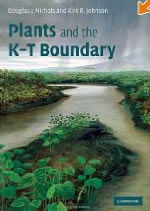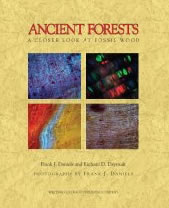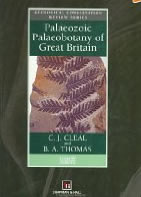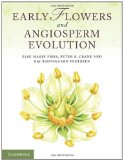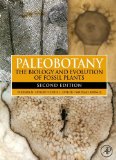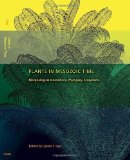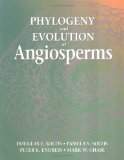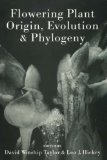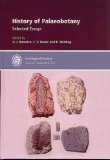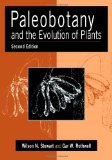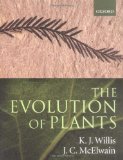Fossil plants
- 13th International Palynological Congress / 19th International Organisation of Palaeobotany Congress (Tokyo, Japan August 23-30, 2012)
- A comparison between Badenian macroflora in Slovakia and Bulgaria

- A History of Palaeozoic Forests
- A morphotype catalog and paleoenvironmental interpretations of early Miocene fossil leaves from the Hiwegi Formation, Rusinga Island, Lake Victoria, Kenya

- A new method to prepare clean cuticular membrane from fossil leaves with thin and fragile cuticles

- A snapshot into the terrestrial ecosystem of an exceptionally well- preserved dinosaur (Hadrosauridae) from the Upper Cretaceous of North Dakota, USA

- An uncorrelated relaxed-clock analysis suggests an earlier origin for flowering plants

- Anisian floras from the NE of the Iberian Peninsula and the Balearic Islands: a synthesis

- ARTTECH - Scientific and Paleobotany Illustration - A resource site that provides paleobotany illustrations for publishers, museums and paleobotanists
- Bibliography of American Paleobotany
- Biodiversity and the reconstruction of Early Jurassic flora from the Mecsek Mountains (southern Hungary)

- Biophysical constraints on the origin of leaves inferred from the fossil record

- Birbal Sahni Institute of Palaeobotany
- Breakup history of Gondwana and its impact on pre-Cenozoic floristic provincialism

- Carbon Isotope and Stomatal Data of Late Pliocene Betulaceae Leaves from SW China: Implications for Palaeoatmospheric CO2-levels

- Carbon isotopic composition of fossil leaves from the Early Cretaceous sediments of western India

- Carboniferous flora of northeastern Thailand: additional documentation from the Na Duang-Na Klang basin

- Carboniferous plants preserved within sideritic nodules – a remarkable state of preservation providing a wealth of information

- Catalog of the Illustrated Paleozoic Plant Specimens in the National Museum of Natural History

- Cretaceous Angiosperm Diversity
- Cycads
- Cycads: Fossil Record
- Discovery of a Late Permian Angara-Cathaysia mixed flora from Acheng of Heilongjiang, China, with discus-sions on the closure of the Paleoasian Ocean

- Diversity Dynamics of Silurian–Early Carboniferous Land Plants in South China

- Early angiosperm Pseudoasterophyllites cretaceus from Albian-Cenomanian of Czech Republic and France revisited

- Early Cretaceous floras of Western Australia

- Early Cretaceous monocots: a phylogenetic evaluation

- Early Miocene flora of the South Slovakian basin

- Eastern Asian - Eastern North American Phytogeographical Relationships - A History From The Time of Linnaeus To The Twentieth Century
- Estimating the timing of early eukaryotic diversification with multigene molecular clocks

- Evolution of Paleozoic vascular land plant diversity of South China

- Evolution of Plants
- Evolution of Vegetational Tiering
- Extinction and recovery patterns of the vegetation across the Cretaceous-Palaeogene boundary - a tool for unravelling the causes of the end-Permian mass-extinction

- Fagaceae from the early Oligocene of Central Europe: Persisting new world andemerging old world biogeographic links

- Field Adventures - Petrified Forest
- Filling the gaps in the Neogene plant fossil record of eastern North America: Newdata from the Pliocene of Alabama

- First Vascular Land Plants
- Flora of Mataschen – a unique plant assemblage from the late Miocene of eastern Styria (Austria)

- Floristic composition and comparison of middle Eocene to late Eocene and Oligocene floras in North America

- Floristic composition and variation in late Paleocene to early Eocene floras in North America

- Floristic turnover in Iceland from 15 to6 Ma – extracting biogeographical signalsfrom fossil floral assemblages

- Foliage and seeds of malvalean plants from the Eocene of Europe

- Forest flora and vegetation of the European early Palaeogene – a review

- Fossil evidence for Cretaceous escalation in angiosperm leaf vein evolution

- Fossil forests in the freezer

- Fossilium Catalogus II: Plantae
- Fruit and seed floras from exceptionally preserved biotas in the European Paleogene

- Fruits, seeds, and flowers from the Warman clay pit (middle Eocene Claiborne Group), western Tennessee, USA

- Further contribution to the low latitude leaf assemblage from the late Oligocene sediments of Assam and its phytogeographical significance

- Gigantopteroid.org
- Gilboa Forest - Devonian, New York State
- Ginkgoaleans
- Ginkgophytes from the German Kupferschiefer (Permian), with considerations on the taxonomic history and use of Baiera and Sphenobaiera

- GL 310 Paleobotany Syllabus
- Global Vegetation History of the Last 150,000 Years
- Glossary of Botanical Terms
- Glossopteris - insights into the architecture and relationships of an iconic Permian Gondwanan plant

- Gymnosperm Database
- Gymosperms in the Mesophytic
- Hans' Paleobotany Pages
- In Search of the First Flower
- Influence of latitude and climate on spread, radiation and rise to dominance of early angiosperms during the Cretaceous in the Northern Hemisphere

- International Organisation of Palaeobotany
- IPC XIII/IOPC IX 2012 - Palynology and Palaeobotany in the Century of the Environment, August 23-30, 2012 in Tokyo, Japan
- Jurassic flora of Western Australia

- L'Evoluzione delle Piante - I and II
- La flore fossile du bassin houiller de Saint-Étienne
- Latest Cretaceous leaf floras from southern Poland and western Ukraine

- Life history biology of early land plants: Deciphering the gametophyte phase

- Living Fossil Plants At Palomar College
- Mesozoic mass extinctions and angiosperm radiation: does the molecular clock tell something new?
- Metasequoia Flora and its Phytogeographic Significance
- Mid-latitude Palaeogene floras of Eurasia bound to volcanic settings and palaeoclimatic events - experience obtained from the Far East of Russia (Sikhote-Alin´) and Central Europe (Bohemian Massif)

- Mihai's Paleobotany Chronicles
- Monte Heib's Pennsylvanian plant fossils
- New records of Early Cretaceous angiosperm pollen from Portuguese coastal deposits: Implications for the timing of the early angiosperm

- Oligocene-Miocene CO2 fluctuations, climatic and palaeofloristic trends inferred from fossil plant assemblages in central Europe

- Origin of plants: Body plan changes contributing to a major evolutionary radiation

- Palaeobotanical Research Unit
- Palaeoclimate analysis of the flora of the Klikov Formation, Upper Cretaceous, Czech Republic

- Palaeoclimate Estimates for Selected Leaf Floras from the Late Pliocene (Reuverian) of Central Europe Based on Different Palaeobotanical Techniques

- Palaeoclimate Evolution in Siberia and the Russian Far East from the Oligocene to Pliocene – Evidence from Fruit and Seed Floras

- Palaeoclimatic Estimates for the Late Pliocene Based on Leaf Physiognomy from Western Yunnan, China

- Paleobotanical Section of the Botanical Society of America
- Paleobotany and Palynology Group of the Florida Museum of Natural History
- Paleobotany Collection: Catalogs and Information
- PALBOT - Collection de Paléobotanique de l'Université Paris 6
- Paleobotany Publishing Resources
- Paleobotany Type Collection Catalog
- Paleocene and Eocene floristic and climatic change in Russia and Northern Kazakhstan

- Paleogene floral assemblages around epicontinental seas and straits in Northern Central Eurasia: proxies for climatic and paleogeographic evolution

- Paleovegetation maps of the world at intervals since 18,000 14C years B.P
- Palm leaves from the Late Oligocene sediments of Makum Coalfield, Assam, India

- Pannonian vegetation from the northern part of Vienna Basin

- Patterns of Gondwana plant colonisation and diversification

- Peat-forming plants in the Maastrichtian coals of the Eastern Pyrenees

- Plant assemblage from the Upper Miocene deposits of the Bełchatów Lignite Mine (Central Poland)

- Plant Fossil Record Database - includes descriptions and occurrences of many thousands of extinct plants
- Plant fossils at Museum of natural history museum, Vienna
- Plant fossils from Carboniferous Coal
- Plants of Jurassic Park
- Pteridosperms - Carboniferous Seed Ferns
- Quaternary Environments Network Atlas - Plant Geography
- Rare leaf fossils of Monimiaceae and Atherospermataceae (Laurales) from Eocene Patagonian rainforests and their biogeographic significance

- Rate heterogeneity among lineages of tracheophytes: Integration of molecular and fossil data and evidence for molecular living fossils

- Revision of Potamogeton fossils from the Most Basin and their palaeoecological significance (Early Miocene, Czech Republic)

- Revision of Protopteris and Oncopteris tree fern stem casts from the Late Cretaceous of Central Europe

- Role of types in palaeobotanical nomenclature

- Study of fossil wood from the Middle–Late Miocene sediments of Dhemaji and Lakhimpur districts of Assam, India and its palaeoecological and palaeophyto- geographical implications

- Systematics of fungi
- Taxonomy and palaeoecology of the Early Jurassic macroflora from Odrowąż, central Poland

- Tertiary macrofloras of the Bohemian Massif: a review with correlations within Boreal and Central Europe

- Timing of early angiosperm radiation: recalibrating the classical succession

- Timing of eukaryotic evolution: Does a relaxed molecular clock reconcile proteins and fossils?

- UCMP Paleobotany Holdings
- Ultrastructural States of Preservation in Clarkia Angiosperm Leaf Tissues: Implications on Modes of Fossilization

- Virtual Cycad Encyclopedia
- Virtual Paleobotanical Laboratory
- West Virginia - Plant Fossils
- Westfälische Wilhelms University in Münster, Germany: Palaeobotanical Research Group
- Weston Observatory Paleobotany Laboratory
| Plants and the K-T Boundary In Plants and the K-T Boundary, two of the world's leading experts in palynology and paleobotany provide a comprehensive account of the fate of land plants during the 'great extinction' about 65 million years ago. They describe how the time boundary between the Cretaceous and Paleogene Periods (the K-T boundary) is recognized in the geological record, and how fossil plants can be used to understand global events of that time. There are case studies from over 100 localities around the world, including North America, China, Russia and New Zealand. The book concludes with an evaluation of possible causes of the K-T boundary event and its effects on floras of the past and present. This book is written for researchers and students in paleontology, botany, geology and Earth history, and everyone who has been following the course of the extinction debate and the K-T boundary paradigm shift. |
|
| Petrified Wood: The World of Fossilized Wood, Cones, Ferns, and Cycads 176 pages with 430 full color photographs of some of the most beautiful fossil specimens in existence. Chapters include Paleobotany, Geology, Mineralogy, and Collecting Petrified Materials. Hundreds of specimens from private collections are for the first time available for public view. |
|
| Ancient Forests: A Closer Look at Fossil Wood Perhaps the most intriguing, beautiful, and informative fossil wood book of all time, exploring the subject with images to illustrate each point — with Scanning Electron Microscope images, digital micro images, macro photographs, and medium format photographs. |
|
| The Dawn Angiosperms: Uncovering the Origin of Flowering Plants This book is about fossil plants of so-called "pre-historic" angiosperms. It reflects the newest progress in research on the origin of angiosperms, and will definitely trigger many new ideas in research. It emphasizes the early Cretaceous and Jurassic materials, rather than later ones, as they are the key periods for the origin of angiosperms. The author integrates multiple techniques, including SEM, TEM, light microscopy, peeling and cladistics, to study the morphology, anatomy and phylogeny of the fossils. Several Jurassic materials of angiosperms that have never been reported before are included, these used to be thought as pre-historic for flowering plants. Two more fossils angiosperms from the Yixian Formation, where Archaefructus was excavated, are reported. Newer and stricter criterion for identifying fossil angiosperms is proposed. |
|
| Palaeozoic Palaeobotany of Great Britain This volume of the GCR series, one of two dealing with palaeobotany, covers the first 200 million years of the history of land plant evolution, as represented by the palaeobotany GCR site network of Great Britain. It demonstrates how the main facets of land plant evolution can be demonstrated at sites in Britain, and how the fossil record can be of value as an evolutionary and environmental indicator of the geological past. |
|
| Early Flowers and Angiosperm Evolution The recent discovery of diverse fossil flowers and floral organs in Cretaceous strata has revealed astonishing details about the structural and systematic diversity of early angiosperms. Exploring the rich fossil record that has accumulated over the last three decades, this is a unique study of the evolutionary history of flowering plants from their earliest phases in obscurity to their dominance in modern vegetation. The discussion provides comprehensive biological and geological background information, before moving on to summarise the fossil record in detail. Including previously unpublished results based on research into Early and Late Cretaceous fossil floras from Europe and North America, the authors draw on direct palaeontological evidence of the pattern of angiosperm evolution through time. Synthesising palaeobotanical data with information from living plants, this unique book explores the latest research in the field, highlighting connections with phylogenetic systematics, structure and the biology of extant angiosperms. |
|
Paleobotany: The Biology and Evolution of Fossil Plants, Second Edition |
|
| Plants in Mesozoic Time: Morphological Innovations, Phylogeny, Ecosystems Plants in Mesozoic Time showcases the latest research of broad botanical and paleontological interest from the world's experts on Mesozoic plant life. Each chapter covers a special aspect of a particular plant group—ranging from horsetails to ginkgophytes, from cycads to conifers—and relates it to key innovations in structure, phylogenetic relationships, the Mesozoic flora, or to animals such as plant-eating dinosaurs. The book's geographic scope ranges from Antarctica and Argentina to the western interior of North America, with studies on the reconstruction of the Late Jurassic vegetation of the Morrison Formation and on fossil angiosperm lianas from Late Cretaceous deposits in Utah and New Mexico. The volume also includes cutting-edge studies on the evolutionary developmental biology ("evo-devo") of Mesozoic forests, the phylogenetic analysis of the still enigmatic bennettitaleans, and the genetic developmental controls of the oldest flowers in the fossil record. |
|
| Phylogeny & Evolution of Angiosperms Our understanding of angiosperm relationships has changed dramatically during the past ten years. The big picture of angiosperm phylogeny emerged suddenly as a direct result of collaborative molecular analyses, and longstanding views of deep-level relationships required revision. Many major clades of angiosperms did not correspond to the classes, subclasses, and orders of modern classifications. Furthermore, a wealth of recent data coupled with current understanding of phylogeny permits reevaluation of many deep-rooted evolutionary hypotheses. Soltis et al. provide a comprehensive summary of current concepts of angiosperm phylogeny and illustrate the profound impact that this phylogenetic framework has had on concepts of character evolution. In so doing, they acknowledge inadequacies in both current understanding of phylogeny and knowledge of morphological characters, as well as the need for additional study. |
|
| Flowering Plant Origin, Evolution And Phylogeny This book covers the hot topics of angiosperm structure and evolution in several chapters discussing vegetative and reproductive characters. It also looks at the implications of ancestral angiosperm characters for an herbaceous origin and the phylogeny of angiosperms from a structure and molecular perspective. |
|
| History of Palaeobotany: Selected Essays Often regarded as the "Cinderella" of palaeontological studies, palaeobotany has a history that contains some fascinating insights into scientific endeavour, especially by palaeontologists who were perusing a personal interest rather than a career. The problems of maintaining research facilities in universities, especially in the modern era, are described and reveal a noticeable absence of a national UK strategy to preserve centres of excellence in an avowedly specialist area. Accounts of some of the pioneers demonstrate the importance of collaboration between taxonomists and illustrators. The importance of palaeobotany in the rise of geoconservation is outlined, as well as the significant and influential role of women in the discipline. Although this volume has a predominantly UK focus, two very interesting studies outline the history of palaeobotanical work in Argentina and China. |
|
| Paleobotany and the Evolution of Plants Originally published in 1993, this second edition of a successful textbook describes and explains in a refreshingly clear way the origin and evolution of plants as revealed by the fossil record and summarises paleobotanical information relevant to our understanding of the relationships between the major plant groups, extant and extinct. As in the first edition, the text is profusely illustrated with line illustrations and half-tones. For those students with little knowledge of plant structure and morphology there is a brief resumé of those features of extant plants that will be needed to gain a better understanding of the fossil record. Summarising charts are also used to help students visualise the interpretative material. |
|
| The Evolution of Plants A major new undergraduate textbook on plant evoution This is a broad but provocative examination of the evolution of plants from the earliest forms of life to the development of our present flora. Taking a fresh, modern approach to a subject often treated very stuffily, the book incorporates many recent studies on the morphological evolution of plants, enlivens the subject with current research on ancient D.N.A. and other biomolecular markers, and places plant evolution in the context of climate change and mass extinction. It is written to be accessible to undergraduates, so, for example, geological time is discussed in terms of 'millions of years ago' as well as by the names of the ages, and English equivalents of plant names are prefered, e.g. seed plants (instead of gymnosperms), flowering plants (instead of angiosperms). * Links up the trends/patterns seen in the fossil flora from the earliest green algae through to the present day. * Covers the whole geological timescale, but focuses the chapters on periods when major evolutionary changes occurred. * Special Biome Maps indicate the general trends in changing global plant distribution through time. |
